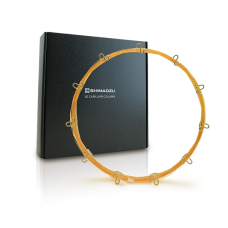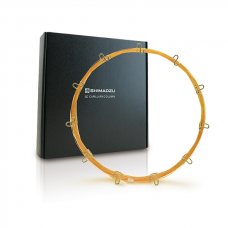Guard Columns
-
Description:
Extend column lifetime. Excellent inertness—obtain lower detection limits for active compounds. Sharper chromatographic peaks by utilizing retention gap technology. Maximum temperature: 360 °C.
OUT OF STOCKExtend column lifetime. Excellent inertness—obtain lower detection limits for active compounds. Sharper chromatographic peaks by utilizing retention gap technology. Maximum temperature: 360 °C.
-
Description:
Extend column lifetime. Excellent inertness—obtain lower detection limits for active compounds. Sharper chromatographic peaks by utilizing retention gap technology. Maximum temperature: 360 °C.
OUT OF STOCKExtend column lifetime. Excellent inertness—obtain lower detection limits for active compounds. Sharper chromatographic peaks by utilizing retention gap technology. Maximum temperature: 360 °C.
-
Description:
Extend column lifetime. Excellent inertness—obtain lower detection limits for active compounds. Sharper chromatographic peaks by utilizing retention gap technology. Maximum temperature: 360 °C.
OUT OF STOCKExtend column lifetime. Excellent inertness—obtain lower detection limits for active compounds. Sharper chromatographic peaks by utilizing retention gap technology. Maximum temperature: 360 °C.
-
Description:
Tested with a comprehensive test mix to ensure high inertness. Useful for a wide range of applications. Use with most common solvents. Maximum temperature: 360 °C.
OUT OF STOCKTested with a comprehensive test mix to ensure high inertness. Useful for a wide range of applications. Use with most common solvents. Maximum temperature: 360 °C.
-
Description:
Tested with a comprehensive test mix to ensure high inertness. Useful for a wide range of applications. Use with most common solvents. Maximum temperature: 360 °C.
OUT OF STOCKTested with a comprehensive test mix to ensure high inertness. Useful for a wide range of applications. Use with most common solvents. Maximum temperature: 360 °C.
-
Description:
Tested with a comprehensive test mix to ensure high inertness. Useful for a wide range of applications. Use with most common solvents. Maximum temperature: 360 °C.
OUT OF STOCKTested with a comprehensive test mix to ensure high inertness. Useful for a wide range of applications. Use with most common solvents. Maximum temperature: 360 °C.
-
Description:
Tested with a comprehensive test mix to ensure high inertness. Useful for a wide range of applications. Use with most common solvents. Maximum temperature: 360 °C.
OUT OF STOCKTested with a comprehensive test mix to ensure high inertness. Useful for a wide range of applications. Use with most common solvents. Maximum temperature: 360 °C.
-
Description:
Tested with a comprehensive test mix to ensure high inertness. Useful for a wide range of applications. Use with most common solvents. Maximum temperature: 360 °C.
OUT OF STOCKTested with a comprehensive test mix to ensure high inertness. Useful for a wide range of applications. Use with most common solvents. Maximum temperature: 360 °C.
-
Description:
Tested with a comprehensive test mix to ensure high inertness. Useful for a wide range of applications. Use with most common solvents. Maximum temperature: 360 °C.
OUT OF STOCKTested with a comprehensive test mix to ensure high inertness. Useful for a wide range of applications. Use with most common solvents. Maximum temperature: 360 °C.










